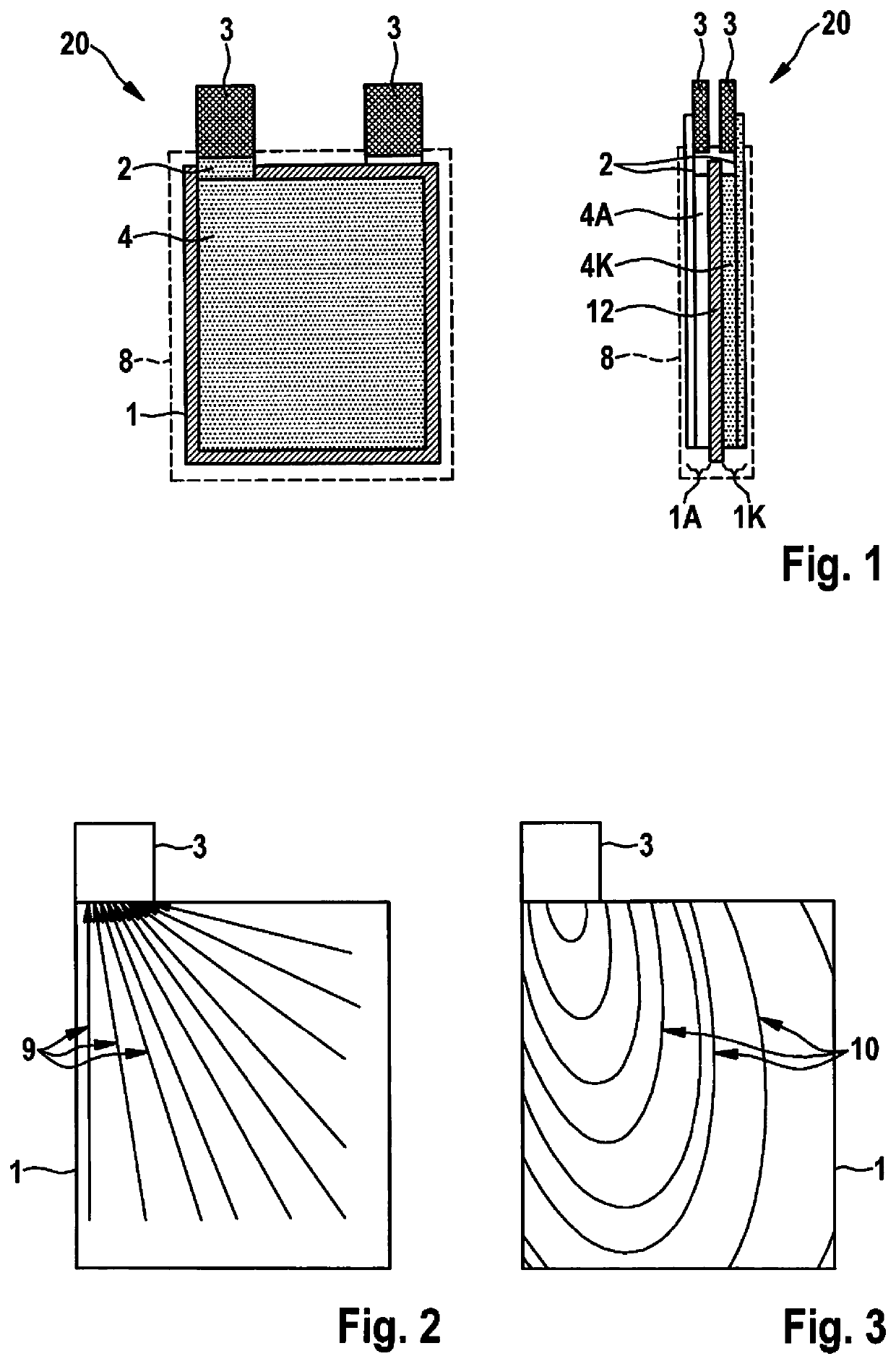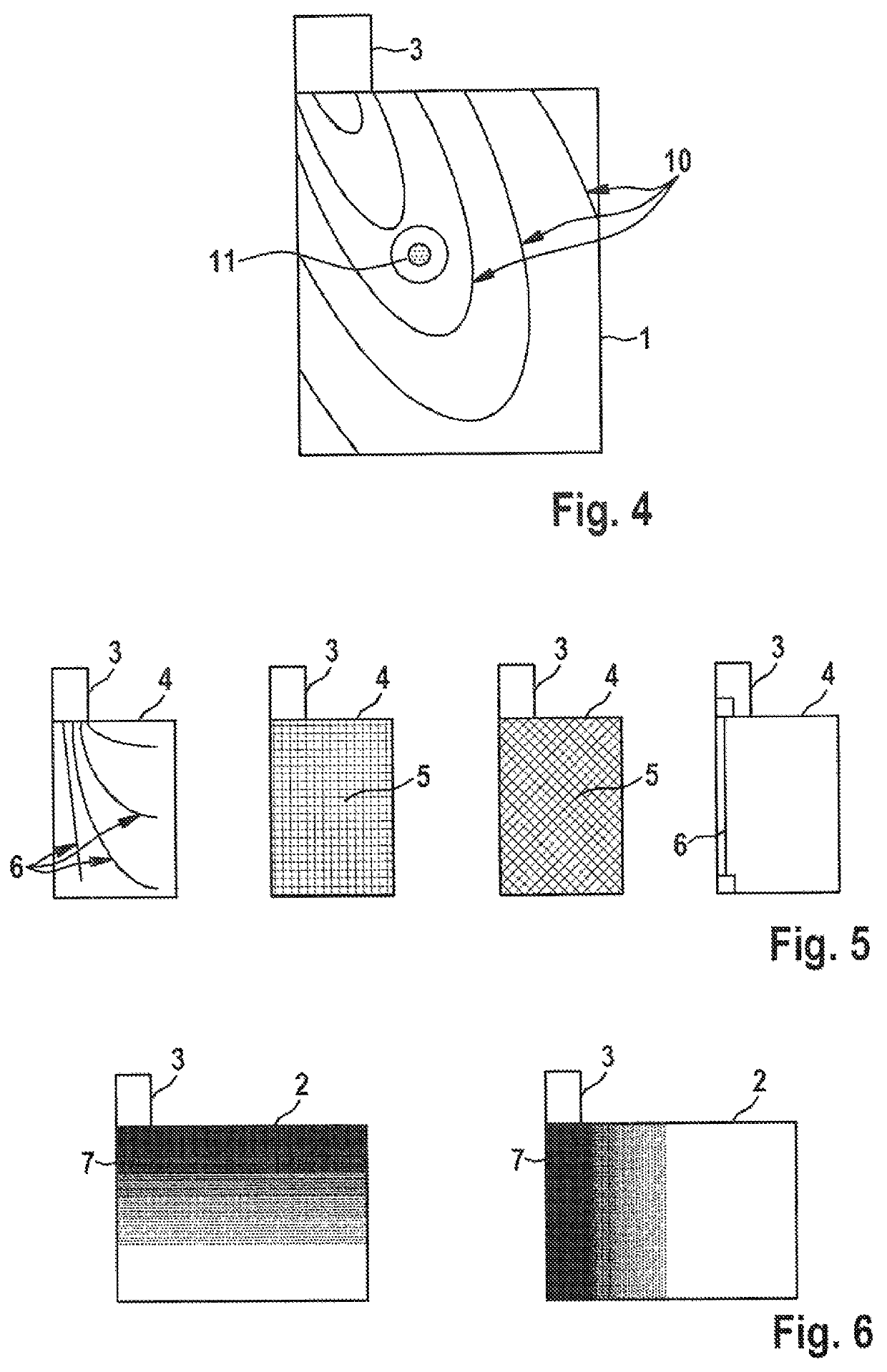Method for producing electrodes having an improved current collector structure
a current collector and electrode technology, applied in the direction of cell components, cell component details, electrochemical generators, etc., can solve the problems of non-homogenous current flow in the electrode, the current produced incrementally on the surface of the electrode is difficult to flow, and the current conducting is associated with losses, so as to improve the ratio of active material to current collector material, improve the effect of current collector structure and significant reduction of portion of current collector material
- Summary
- Abstract
- Description
- Claims
- Application Information
AI Technical Summary
Benefits of technology
Problems solved by technology
Method used
Image
Examples
Embodiment Construction
[0047]FIG. 1 shows the general configuration of an electrochemical cell 20. Electrochemical cell 20 is made up of an anode 1A and a cathode 1K, separated from one another by a separator 12. Separator 12 is electrically insulating, but is transparent for ions. Suitable materials for use as separators 12 include for example microporous plastics, glass fiber nonwovens, or polyethylene nonwovens. Cathode 1K and anode 1A are each made of at least one free-standing active material foil 4, in particular an anode active material foil 4A or a cathode active material foil 4K, and a current collector layer 2 applied thereon. Current collector layer 2 can be made for example of copper, nickel, or aluminum, and can be applied onto active material foil 4 using a galvanic method or a pressure method. As cathode material, for example lithium mixed oxides such as Li4Ti5O12, LiCoO2, LiNiO2, LiMn2O4, or lithium iron phosphate (LiFePO4), can be used. As anode material, for example pastes containing gra...
PUM
| Property | Measurement | Unit |
|---|---|---|
| thickness | aaaaa | aaaaa |
| thickness | aaaaa | aaaaa |
| thickness | aaaaa | aaaaa |
Abstract
Description
Claims
Application Information
 Login to View More
Login to View More - R&D
- Intellectual Property
- Life Sciences
- Materials
- Tech Scout
- Unparalleled Data Quality
- Higher Quality Content
- 60% Fewer Hallucinations
Browse by: Latest US Patents, China's latest patents, Technical Efficacy Thesaurus, Application Domain, Technology Topic, Popular Technical Reports.
© 2025 PatSnap. All rights reserved.Legal|Privacy policy|Modern Slavery Act Transparency Statement|Sitemap|About US| Contact US: help@patsnap.com


